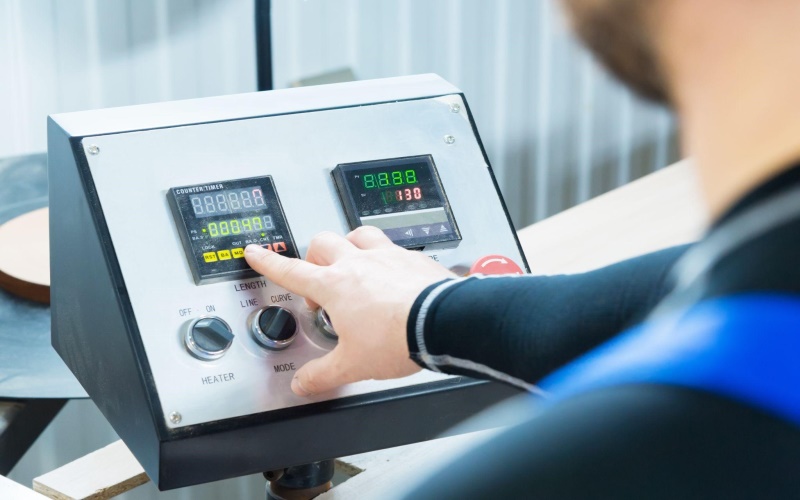An onboard weighing system is a sophisticated technology integrated into the workflow of transport and logistics industries, designed to measure the weight of the contents being carried by vehicles, such as trucks, loaders, and forklifts, directly on the machine itself. This innovative solution provides real-time weight data, enabling operators to maximise efficiency, comply with legal weight regulations, and optimise operational processes. By eliminating the need for external weighing processes, these systems significantly reduce downtime and increase productivity, marking a significant advancement in how businesses manage and distribute load weight.
Onboard weighing systems come in various types and designs, each catering to specific industries and their unique needs. Some of the most commonly used onboard weighing systems include load cell-based systems, pressure sensor-based systems, and strain sensor-based systems. Load cell-based systems use sensors placed on different points of the vehicle to measure weight, while pressure sensor-based systems rely on hydraulic pressure readings to determine weight. Strain sensor-based systems, on the other hand, use strain gauges attached to key points on the vehicle to measure changes in weight and calculate the overall weight of the load.
11 Advantages of an Onboard Weighing System
1: Real-time Weight Monitoring
One of the primary benefits onboard weighing system provides is the ability to monitor weight in real-time. This immediate access to data allows operators to make informed decisions on the fly, ensuring that loads are within legal and safe weight limits before the vehicle departs.
It also facilitates dynamic weight management during loading and unloading processes, reducing the risk of overloading and underloading. This not only prevents potential legal penalties and reduces wear and tear on the vehicle but also enhances road safety by ensuring that vehicles are correctly balanced during transport.
2: Increased Efficiency and Productivity
Onboard weighing systems significantly improve efficiency and productivity as they eliminate the need for external weighing processes. This reduces downtime, waiting times, and unnecessary trips to offsite weighbridges or scales. The real-time data also streamlines loading and unloading processes by providing accurate weight readings without having to stop and reposition the vehicle multiple times.
3: Legal Compliance
Many countries have strict weight regulations for vehicles, with penalties ranging from fines to vehicle impoundment for non-compliance. Onboard weighing systems provide accurate weight measurements, ensuring that vehicles stay within legal limits and avoid any potential legal consequences.
4: Cost Savings
By avoiding overweight violations and subsequent fines or penalties, onboard weighing systems help businesses save on costs. They also reduce excessive wear and tear on vehicles, decreasing maintenance costs and prolonging vehicle lifespan.
5: Enhanced Safety
Overloaded vehicles pose a significant safety risk to both the driver and others on the road. Onboard weighing systems ensure that loads are correctly distributed and within safe weight limits, reducing the chances of accidents caused by unbalanced or overweight vehicles.
6: Improved Load Distribution
Onboard weighing systems provide weight data for individual axles and the entire vehicle, allowing operators to distribute loads evenly for optimum balance. This improves steering and handling, making the vehicle safer to operate.
7: Increased Accuracy
Traditional weighing methods, such as using weighbridges or scales, may not always provide accurate measurements due to external factors like wind or uneven ground surfaces. Onboard weighing systems eliminate these variables and provide precise weight readings, ensuring accuracy.
8: Customizable and Versatile
Onboard weighing systems can be customised to fit specific vehicle types, sizes, and applications. They are also versatile in their measurements, providing data for both static (stationary) and dynamic (moving) weights, making them suitable for various industries and purposes.
9: Easy Installation and Integration
Most onboard weighing systems are designed to be easily installed on vehicles, with minimal modifications needed. They also integrate seamlessly with existing vehicle systems, such as telematics or fleet management software, providing a comprehensive overview of vehicle weight data.
10: Improved Customer Service
With real-time weight data, businesses can provide accurate and timely information to customers regarding load weights and delivery times. This improves customer satisfaction and is especially beneficial for time-sensitive deliveries.
11: Environmental Benefits
Overloaded vehicles consume more fuel, increasing carbon emissions and contributing to air pollution. Onboard weighing systems prevent overloading, reduce fuel consumption, and promote environmentally friendly practices in the transportation and logistics industry.
Final Thoughts
Overall, onboard weighing systems have revolutionised how businesses manage load weight, offering numerous benefits such as increased efficiency, cost savings, and improved safety. As technology continues to advance, these systems will only become more sophisticated and integral in modern transport and logistics operations.
So, if you are a business looking to optimise your load management processes, consider investing in an onboard weighing system for your vehicles. And if you are on the hunt for reliable and durable weighing systems and load cells, contact Meltrons Australia. They can help you get your money’s worth on weighing scales and kits.

